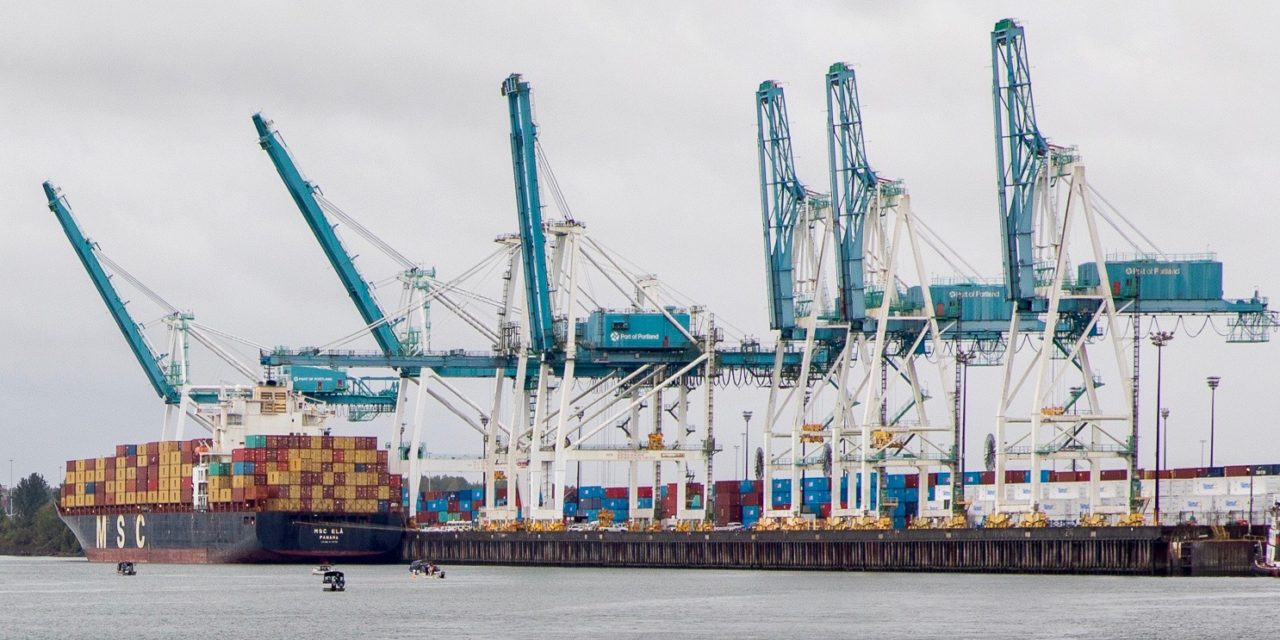Portland’s port is located on the Columbia River, about 100 river miles inland from the Pacific Ocean. It maintains a busy ro/ro terminal and it is an important hub for bulk grain exports, but its container terminal has been little-used in recent years. In addition to the challenges of the Columbia River Bar and the long stretch of pilotage upriver, the navigation channel is maintained at 43 feet of depth – not deep enough for the latest generation of boxships to call with a full load.
The now-defunct Hanjin Shipping was the last major brand to depart in 2015, and small specialty line Westwood departed in 2016, leaving the port without any regular container services.
Four years later, in January 2020, South Korean national carrier SM Line relaunched a weekly service to Portland, bringing new activity to the long-idled Terminal 6. This month, the Port of Portland announced that SM Line would be adding two more vessels per month to the rotation. In addition, the port said that number-two container carrier MSC has agreed to bring a weekly service to Portland.
This weekend, the first MSC container ship to call Portland’s T6 arrived at last. The traditional-Panamax MSC Ela, with a capacity of 4,900 TEU, berthed on Sunday with assistance from Foss Maritime tugs.
“MSC calling on the Port of Portland is a huge boost for the region, and illustrates the strength of the maritime infrastructure along the Columbia River,” said Art Dahlin, general manager for the Columbia at Foss. “As a solution to the many challenges facing the supply chain due to the pandemic, MSC’s arrival supports the fact that the Port of Portland is a viable option for shipping companies calling on U.S. West Coast ports.”

